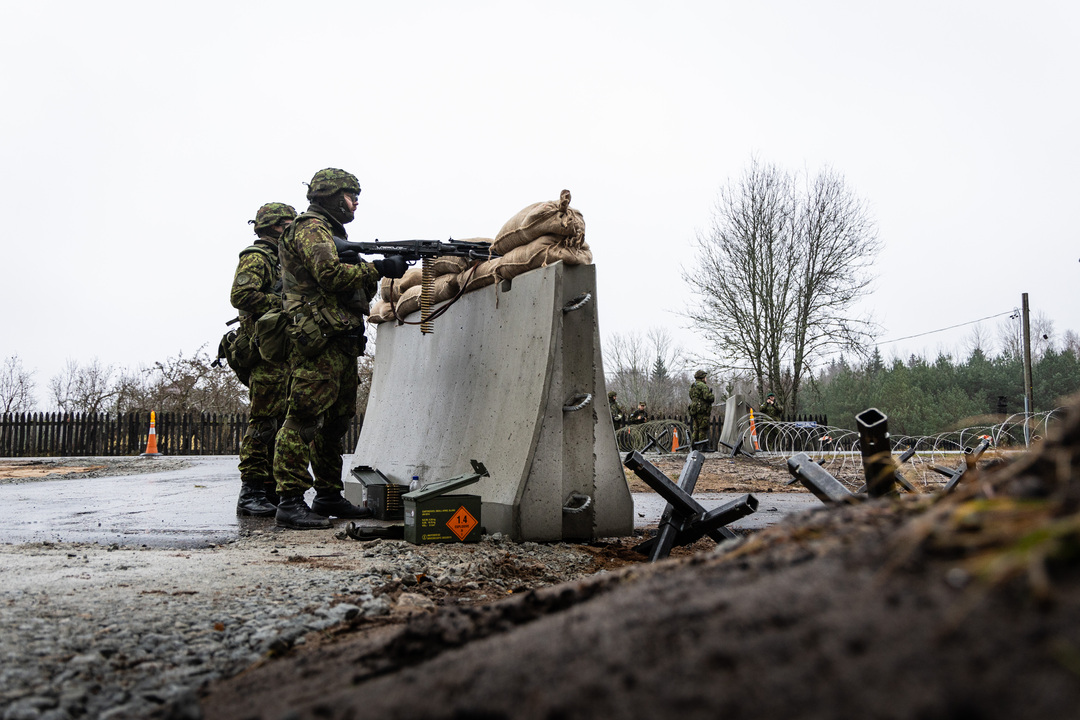With concerns over the security situation in the Baltics mounting, Lithuania, Latvia, and Estonia agreed in January to build a common Baltic defense line along their borders with Russia and Belarus.
The idea seems to exploit lessons from the highly effective defensive systems that have worked well in Ukraine.
According to the Lithuanian Minister of Defense, Arvydas Anušauskas, the defense line will include a complex set of measures designed to impede the movement of enemy forces invading the Baltics.
The plans include a network of around 600 fortified bunkers in Estonia alone, at a cost of some $64m, and 18 counter-mobility parks in Lithuania, where anti-personnel and anti-vehicle equipment like tank traps will be stored.
The defensive terrain will include the creation of natural barriers such as tree-lined avenues and a deepening of drainage ditches in the border region. Existing fences with elements of concertina razor wire along the Lithuanian and Latvian borders with Belarus, which were installed in the context of the 2021-2022 migrant crisis orchestrated by Minsk, would be incorporated into the fortification system.
The plans exploit some lessons from Ukraine’s battlefields. While there have been successful offensives by Ukraine and the Russian invaders, defense in depth, including bunkers and trenches, has proved highly effective. Ukraine is currently investing $500m in new fortifications.
The Baltic defenses send a signal to the Kremlin and help strengthen the credibility of NATO’s current regional deterrence and defense. Given the exposed geo-strategic location of the Baltic states, the issue of physical accessibility is crucial for both allies and adversaries.
In recent years, NATO has sought to improve deterrence by stationing multinational combat-ready forces in Lithuania, Latvia, and Estonia.
Although this is clearly an improvement on the alternative, it is obvious that NATO troops on the ground, even if upgraded to brigade-size units as agreed at NATO’s Madrid Summit, would need very significant reinforcements to be able to withstand a full-scale Russian invasion.
However, there are questions about NATO’s ability to provide these reinforcements smoothly and on time. Since Russia would do everything in its power to prevent the arrival of alliance reinforcements, it is critical that Baltic and NATO’s current tripwire forces hold out for as long as possible.
For military reinforcements, the Baltic states depend on a single land route passage to Poland through the vulnerable Suwałki gap, a narrow neck of land between Poland and Lithuania, which has Belarus on one side and the Russian exclave of Kaliningrad on the other. In a crisis, access to the Baltics for NATO reinforcements could be simultaneously attacked. Russia’s extensive anti-access/area denial (A2/AD) capabilities stationed in Kaliningrad are precisely designed to hinder NATO’s military mobility in the region.

Moreover, the Baltic states’ railway infrastructure is still better connected to Russia and Belarus than to Poland and the rest of continental Europe, and its railways are still mostly Russian rather than European gauge.
The continuing use of wide-track railway gauge puts Russia in a favorable position in terms of military logistics, as it would be able to move reinforcements and heavy military equipment by rail directly into the theatre. This will be alleviated somewhat by the new European-gauge $6.25bn Rail Baltica line from Warsaw to Helsinki, which runs through the Baltic states and is currently under construction.
NATO’s eastern members are beginning to think harder not just about the possibility of military aggression by Russia, but the details of how to fight against it more effectively. They will thereby substantially strengthen the alliance’s Eastern flank.
Dr Justina Budginaite-Froehly is a researcher focusing on strategic security issues and geopolitics in the Baltic Sea region.
Europe’s Edge is CEPA’s online journal covering critical topics on the foreign policy docket across Europe and North America. All opinions are those of the author and do not necessarily represent the position or views of the institutions they represent or the Center for European Policy Analysis.





